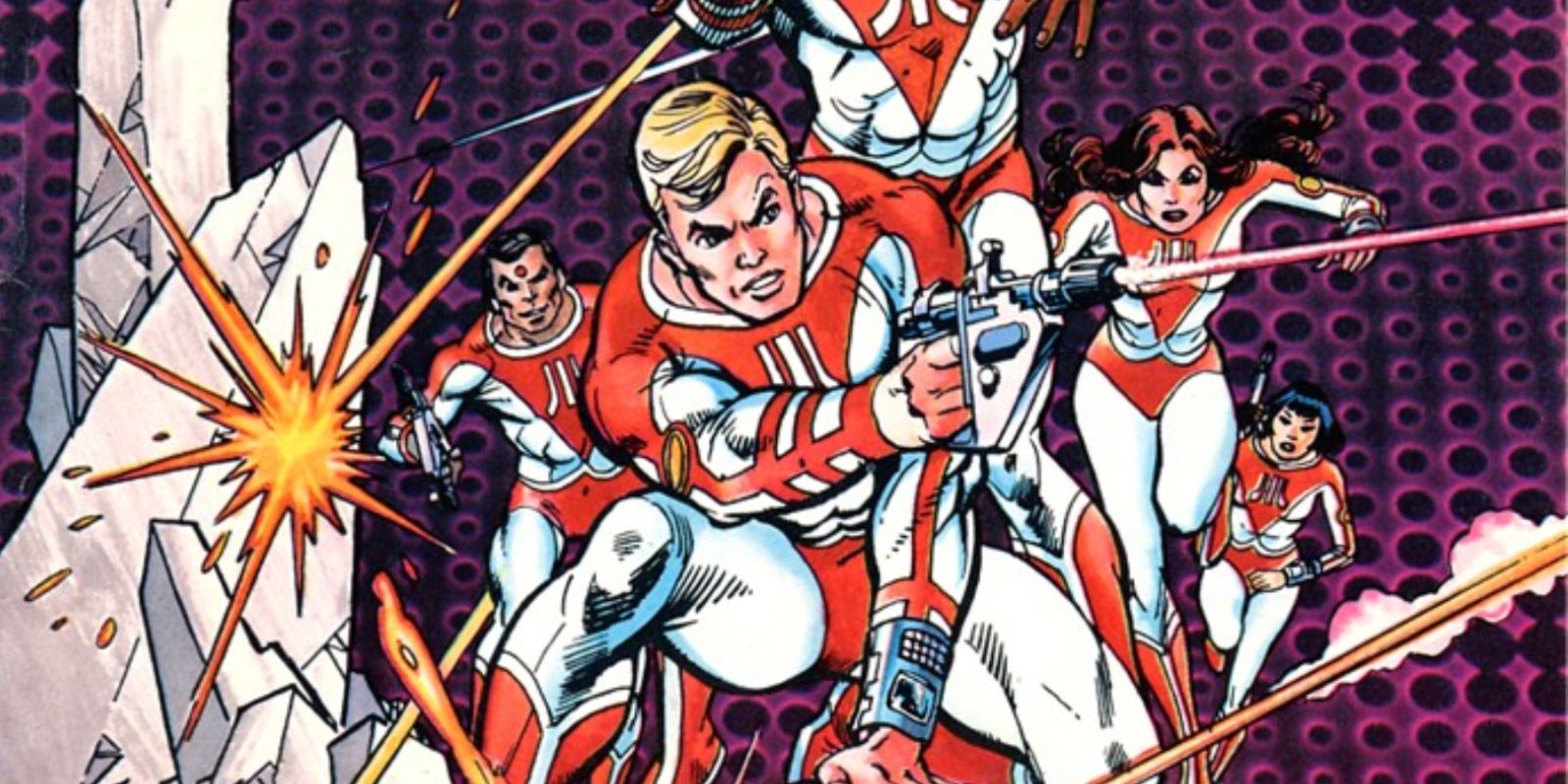Summary
The concept of a multimedia cross-over event is nothing new for comic book and video game fans today. If a hotly anticipated game is announced that’s flush with lore and rousing characters it only seems natural to have animated feature tie-ins, comic book prequel releases, and side-story novelizations. Having such a treasure trove of content at the ready is amazing, but it wasn’t always the case. There was a time, back in video games’ infancy, that all fans got were comics and video games, completely unrelated and without fanfare. But thanks to two of the biggest and most influential names in both comics and video games, the world finally received the first comic/video game crossover event, and it was really, really cool. DC Comics‘ Atari Force was the first comic of its kind and helped lay the foundation for future cross-media endeavors.
The birth of the Atari Force occurred in 1982 as a promotional event between Atari and DC. Atari was the pioneer in both arcade and home video game entertainment, with their home console the Atari 2600 being an industry game changer, and their name was synonymous with video gaming as a whole. Specially marked Atari games came packaged with a mini comic that, over the course of five issues, told a story that was loosely related to the themes of the games. These games were Defender, Berzerk, Star Raiders, Phoenix, and Galaxian. The games included in this promotion were all science fiction shooters, often based on the premise of repelling alien invaders, themes which helped ground the comics and unite them in a common tone and direction. Each of the comics was written by Gerry Conway and Roy Thomas with art by Ross Andru, Gil Kane, Dick Giordano, and Mike DeCarlo. The concept was simple, but groundbreaking. It was the first cross-media event between comics and gaming which proved so successful that more Atari-themed comics were produced in the years to come.
RELATED: Why is Video Game Preservation so Difficult and Why It Is Important?
DC’s Atari Force Was the First Comic Book Video Game Crossover of Its Kind
In 1983 DC Graphic Novel #1 (by Elliot S. Maggin and Jose Luis Garcia-Lopez), entitled “Star Raiders”, was released. Continuing the story first introduced in the previous Atari Force issues, “Star Raiders” further explored the Atari Force universe. More than a simple pack-in comic meant to increase video game sales, “Star Raiders” was its own science fiction epic that offered solid writing and lush, gorgeous art. DC Graphic Novel #2 (by Steve Skeates and David Wenzel), entitled “Warlords,” did away with the science fiction themed Atari Force story and instead expanded the fantasy setting of the similarly entitled Atari video game. The first two DC Graphic Novels were proof that each of Atari’s video games had the potential to become fully-fledged series in their own rights, but the tales of the Atari Force were far from over.
1984’sAtari Force (by Gerry Conway and Jose Luis Garcia-Lopez) was a 20-issue series that took the initial plot of the original Atari Force comics and expanded it into a high-octane sci-fi action epic. Over the course of the series various other writers and artists would lend their talents to the series, including Eduardo Barreto, Mike Baron, Keith Giffen, Robert Loren Fleming, and Karl Kesel. Atari Force, through its 20-issue run, brought together the ideas of the previous Atari-themed comics and gave them a universe all their own. It might seem rather simple by today’s standards, but this level of success and creativity was unprecedented for its time.
RELATED: Atari is Celebrating Its 50th Anniversary With a Warioware-Like Game
Atari Force Was Much More Than Just a Simple Video Game Adaptation
Set far in the distant year of 2005, the Earth has been depleted and destroyed due to war. Desperate to find a new home for humans, the Atari Technology and Research Institute was humanity’s last chance at fleeing their dying world. Martin Champion, Li San O’Rourke, Lucas Orion, Lydia Perez, and Mohandas Singh were brought together to form the Atari Force, the world’s finest crew that would pilot the experimental starcraft Scanner One. Equipped with technology that allowed them to explore the multiverse, the Atari Force embarked on a dangerous mission to find a suitable planet to replace Earth. Along the way they would encounter alien beings both helpful and menacing including the massive multiversal entity known as the Dark Destroyer. After battling against countless alien forces, the Atari Force was successful in finding a new home for humanity.
1984’s Atari Force series picks up 18 years after the events of the original. Humanity has devolved back into warlike tendencies and the peaceful utopia that the Atari Force had pledged to protect has become battered and worn. As the Dark Destroyer returns from the depths of the multiverse in search of the Atari Force and all of their children, Martin Champion, along with his son Tempest, the mercenary Dart, and a host of alien companions, embarks on yet another multiversal adventure to save all creation. Atari Force uses many elements first introduced in the previous series, but establishes itself as an independent story that doesn’t need to simply to ride the coattails of its original video game theme.
RELATED: One of the Rarest Atari Games is an Indie Happy Birthday Game
Atari Force’s Legacy and Influence Can Be Felt Today
What DC and Atari did was set a precedent that countless other companies would follow for years. Comic book tie-ins for video games became very popular throughout the 90s with such works as Valiant’s Nintendo Comics System series, Malibu Comics’ Mortal Kombat and Street Fighter series, Marvel’s collaboration with Resident Evil, and Archie’s long-running Sonic the Hedgehog series. The 2000s and 2010s also saw a plethora of video game comics with IDW Publishing’s Silent Hill series, Titan Comics’ Assassin’s Creed, Dark Souls, Bloodborne, and Dead Space comics. Dark Horse Comics’ has also had major success with their comic adaptations based on The Witcher.
There are plenty more video game-based comics to list, but the point remains that even today the idea of creating a comic book based on a video game is not only still relevant, but entirely financially viable. DC and Atari took a large gamble when they first introduced the prospect of the Atari Force. If it had been billed as another cheap cash grab, a hyper niche novelty only suitable for diehard fans, then it might have taken years before such an event was tried again. Atari Force is a testament to the fact that anything, if given the proper talent and treatment, can become something fantastic. Fans of both classic gaming and sci-fi should relive the adventures of comics’ very first video game heroes.
DC’s partnership with Atari trailblazed the relationship between comic books and video games that set a precedent for decades. Read More

